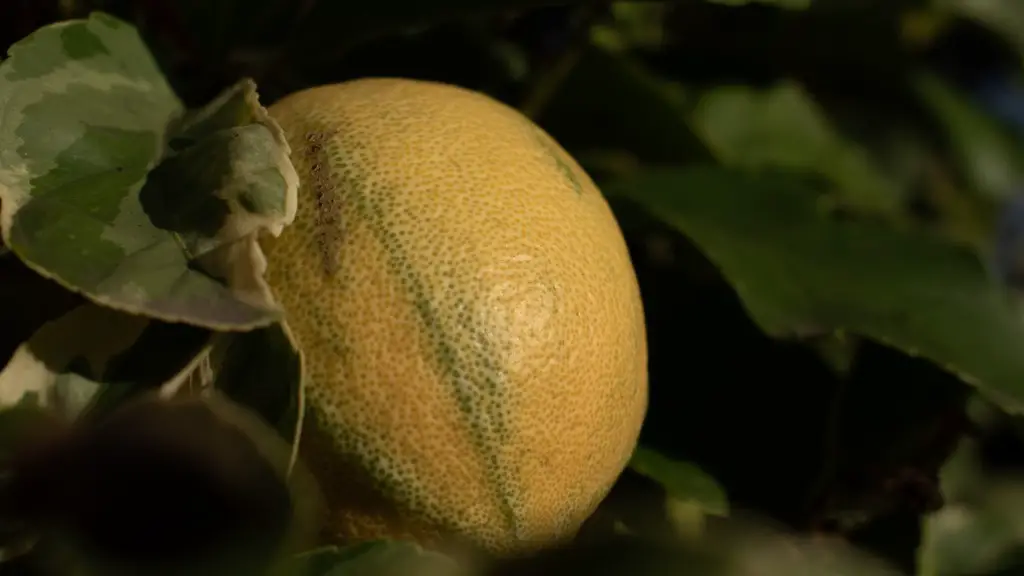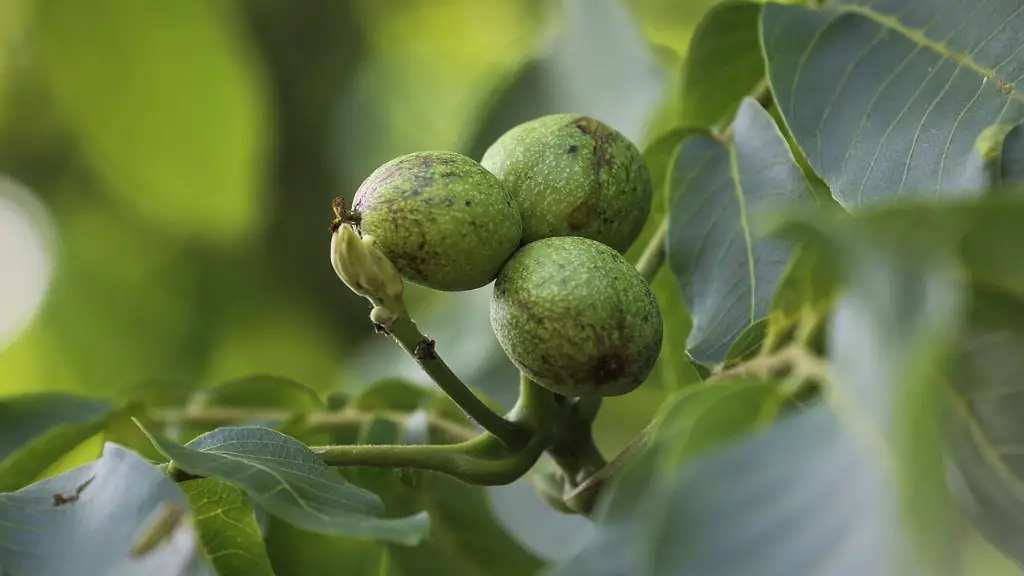When it comes to the question of “how many years before a lemon tree bears fruit?”, it is really dependent on the variety. The most common commercial lemon tree varieties, known as Eureka and Lisbon, typically bear fruit two to three years after planting. However, the variety Meyer lemon tree has a much more extended fruiting season and can take up to eight years before bearing fruit.
It is worth noting that for lemon trees to produce a good crop of fruit, proper tree care must be taken. Trees require frequent watering and a considerable amount of sunlight, as well as nutrients from fertilizers. Pruning can be beneficial for the production of quality fruit, as it helps to promote better air circulation, light penetration, and encourages the tree to produce new growth.
Generally, lemon trees will flower in the spring, with the fruit maturing and ripening throughout the summer months. Once the fruit starts to ripen, it can be picked and the tree will continue to produce new flowers and fruit throughout the season. Over-fruiting can lead to reduced crop yields in the following season, so pruning and judicious harvesting is advised to promote the best yields.
The ideal climate for lemon trees is typically Mediterranean climates, with warm summers and mild winters, but there are varieties of lemon trees that can tolerate cold winters and sub-freezing temperatures. Areas with long, hot summers, such as the US Deep South and much of California, provide ideal climates for growing lemon trees.
When planted in the right climate, with appropriate tree care and maintenance, lemon trees can be an excellent addition to the garden and will provide a great source of both ornamental and edible fruits. With patience, and the right conditions, a lemon tree can provide delicious fruit for many years.
Lemon Tree Fertilization
Fertilization is an important factor for lemon trees to reach fruiting maturity. The best fertilizer for lemon trees should provide a good balance of essential nutrients, such as nitrogen, phosphorus, and potassium. It should also contain other trace elements, such as zinc, iron, and magnesium, which are also necessary for promoting healthy growth. Additionally, lime can be added to the soil to increase the pH level and reduce the acidity, which is beneficial for growing citrus trees.
Ideally, fertilizer should be applied two or three times a year, usually in the spring and summer months, when the lemon tree is actively growing. Foliar fertilizer can also be used to supplement tree nutrition, with liquid fertilizer added to the soil directly or sprayed onto the foliage with a garden sprayer. Compost or aged manure can be added to the soil as a natural fertilizer, to improve soil structure, texture, and biodiversity.
Fertilizer should be used in moderation and care should be taken to avoid over-fertilizing, as this can result in nutrient-burn, or even kill the plant. As a general rule, fertilizer should only be applied when the soil is dry, and it should be washed away from the stem and foliage with water, once it has been applied.
Lemon Tree Pruning
Pruning is an important part of lemon tree maintenance. It helps to create a strong and healthy tree structure, by removing dead branches, suckers, and overcrowded limbs, whilst encouraging flowering and fruit growth. Pruning typically should be done in the winter or early spring, while the tree is still dormant.
Tools such as pruning shears are used to cut away any dormant or dead wood, as well as any crossing or weak branches, leaving a good framework for the tree to grow from. Pruning should be done with care, avoiding large cuts and leaving a good balance of foliage and exposed branches, as too much pruning can adversely affect leaf production and shade the developing fruit.
By pruning away some of the older branches and performing selective thinning, sunlight can be allowed to reach the more recently developed branches, allowing for better maturation of the fruit. By pruning away dead and weak branches, damage from wind and adverse weather can be minimized.
Lemon trees should also be regularly pruned to reduce the risk of disease and pests, as well as to promote the growth of new branches and stems. Pruning also helps to reduce the size of the lemon tree, aiding in long-term maintenance.
Lemon Tree Pest Control
As with any other plant, lemon trees can be vulnerable to a range of pests and diseases. The most common pests to affect lemon trees are aphids, mites, and scale insects, which can all be controlled with insecticides or pesticide dust. Pre-mixed sprays and traditional insecticides can also be used, but should be applied with care, to avoid damage to the tree.
Fungal infections can also plague lemon trees, though these can usually be treated with fungicides. Sooty mold, Anthracnose, and gummosis are all fungal diseases which can affect lemon trees, and can be addressed with the appropriate products. Regular inspection of the tree is recommended to detect any issues as soon as possible.
In some cases, it may also be necessary to use pest repellents to protect the tree, such as compost tea or garlic sprays, to repel pests. Keeping the area around the tree clear of debris and fallen fruit can also help to reduce the risk of pest infestation.
Lemon Tree Pollination
Pollination is an important part of lemon tree fruiting, as it helps to ensure that fertilized flowers develop into fruit. For lemon trees to set fruit, it is necessary for them to be cross-pollinated, either by a compatible variety of lemon tree which blooms at the same time or by a pollinator, such as bees.
Bee hives can be an effective way of ensuring pollination for lemon trees, as bees are essential for the pollination of many fruiting plants. Other pollinators, such as butterflies, can help to ensure cross-pollination of the flower, but these should be used in moderation, as too many can be disruptive to the tree’s growth and fruiting pattern.
When buying lemon tree varieties, it is important to check that the variety is compatible for pollination. If not, it is necessary to supplement pollination with a compatible variety of lemon tree, or to introduce a pollinator, in order to ensure that the flowers are fertilized and develop into fruit.
Lemon Tree Diseases
Like all living things, lemon trees can be susceptible to a range of diseases, both fungal and viral. Common viral diseases include citrus tristeza virus, citrus leaf miner, and citrus blight. Both fungal diseases, such as Alternaria and brown rot can also attack the tree, causing leaf and fruit discolouration.
Most tree diseases can be treated with fungicides, though the best course of action is to avoid them in the first place, by inspection and prompt control of any infestations. Regular pruning, fertilization, and pest control can also help to limit the spread of disease. In cases where diseases are widespread, it is sometimes necessary to remove the tree.
It is also important to keep the surrounding environment clean and free of pests, in order to prevent the spread of disease. Any pests which are found should be dealt with immediately, to avoid them spreading to other trees, and to limit the risk of disease.
By providing a good environment, with adequate care and maintenance, lemon trees can thrive and produce delicious citrus fruit for many years.





